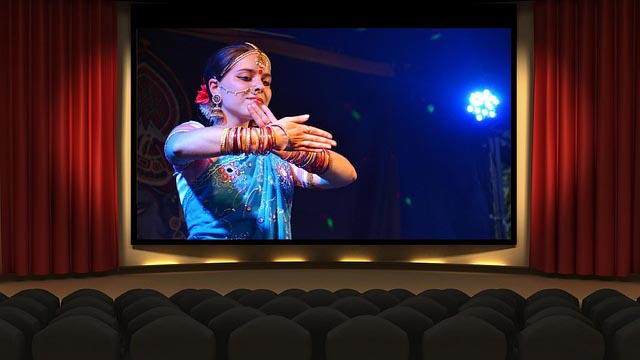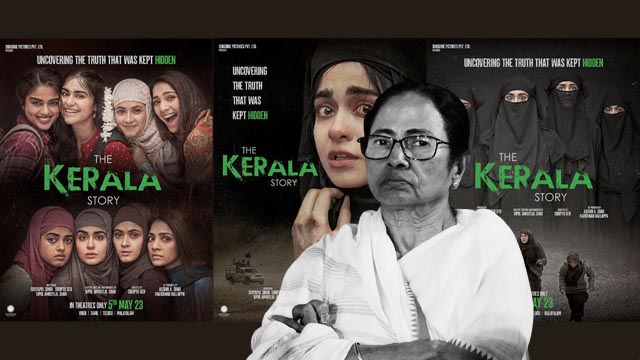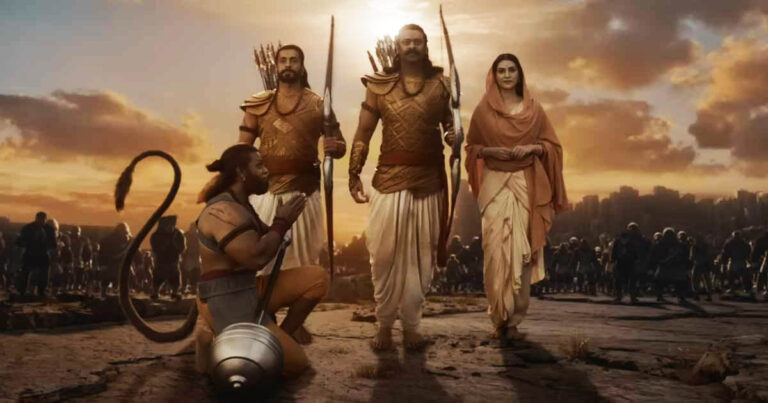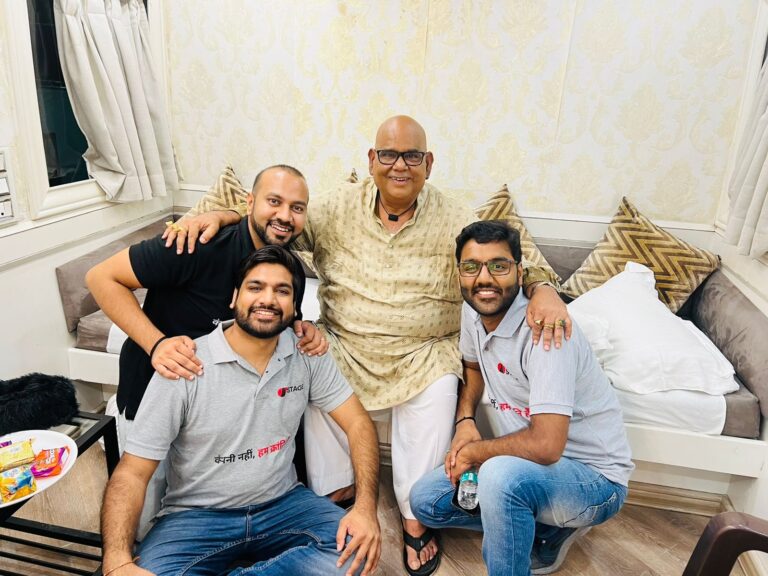How the compradors of Bollywood ripped the poor of celluloid entertainment
Bollywood is the popular term used to designate the Hindi-language film industry of India. On average, Bollywood creates 800-1000 films annually and sells four billion tickets. How can this billion-dollar industry possibly be considered bankrupt? Bollywood is bankrupt of all originality, creativity, vision, or tolerance. There was a time it created larger-than-life inclusive cinema, but now the concentration has shifted from art to artlessness. The insiders comment that Mumbai is all about projects and profits, real vision and cinema rests in regional movies.
The chief of the Samajwadi Party, Akhilesh Yadav, recently stated, “BJP is using cinema for political propaganda.” India is the largest film-producing country in the world, with Bollywood alone producing more than 1,000 films every year. In 2021, the total revenue of the Indian film industry surpassed Rs 90 bn. Undoubtedly, film-making is a lucrative business, but as mentioned above, the way Indian cinema has been operating for the last three decades, it wouldn’t be wrong to say that the more films it churned, the more it fell in terms of artistic quality and inclusivity.
This piece here showcases how over the years, Indian cinema in general, and Hindi cinema in particular, stopped making films for the underprivileged strata of society. With the advent of multiplexes in India, the audience got divided into sections – single screen or theatre audience and multiple screens or multiplex audience.
The multiplexes entail less seating space, higher ticket prices, better sound systems, enhanced technology and posh ambience where neo-elites and middle-class families enjoy films comfortably. In contrast to the multiplexes, single-screen tickets were priced at a much lower rate. They had a widescreen and stuffy environment where the audience enjoyed the freedom to boo, cry, dance, and throw coins and paper strips or currency notes during the screening of a film.
Although both classes watched films in the same cinema halls—in different classes—until the advent of the neo-liberal economic reforms in the early 1990s, the rift between the two classes started widening with time until films began to be made only for the multiplex audiences, and the single-screen audience got lost in oblivion.
The golden era of Indian cinema
Film historian term the era from the late 1940s to the early 1960s as the Golden Age of Indian cinema. The year 1947 witnessed India’s independence. But the earlier devastations of the second world war, the Bengal famine, colonial censorship, and the trauma of the partition made the studio system in India come to an end.
It was the optimism of India’s first prime minister, Jawaharlal Nehru, which revitalised Indian cinema with the new production houses established by directors like Bimal Roy, Mehboob Khan, and Raj Kapoor. The older studios functioning since the 1920s became defunct by the middle of the 1950s.
The Indian cinema during the entire period of the 1950s and a bit of the early 1960s indulged in realising the optimistic Nehruvian dream of an egalitarian socialist society. The films of that period highlighted the strife and struggle of the working class, farmers and toiling masses.
Roy and Khan, with their timeless classics like “Do Bigha Zameen” and “Mother India”, respectively, showcased the ethos of the farmers under the oppressive feudal lords. During this time, the price of the tickets was such that individuals of every urban class could afford a trip to the cinema.
Class distinction in cinema halls
From the very inception of cinema halls, the pricing strategy was such that celluloid entertainment could be affordable to both the rich and the poor. Ashish Rajadhyaksha, in his paperback, ‘Indian Cinema: A Very Short Introduction,’ states, “The prices of tickets started around two or three annas for the ‘pit‘ for the lower class and Rupees two to three for higher classes depending on the seating price which was either a luxurious sofa or an exclusive box seating (sic).”
During the Golden Era, going to the cinema was a grand affair where the entire family went to watch a film together. This is one of the main reasons why family drama and romantic films fared fairly well in that period. The Sino-Indian war in 1962 opened an avenue for a new genre of Indian films – espionage, spy thrillers, and foreign enemies. After the Sino-Indian war, there was a sporadic release of espionage films based around Chinese spies, foreign enemies, and moral contamination.
There was a time when Hindi films focused on Indian values and the negativity of western culture, but slowly and steadily, the focus shifted from foreign enemies to Muslims, portrayed as enemies “within”. And, now, with the ascent of jingoism, every other film is busy propagating staunch nationalism, purporting fanatic ideals, and professing Muslims mostly as terrorists or gangsters.
As we entered the wild and rebellious 1970s, there was a rise in the voice of the youth. It was a period of rising workers, revolutionary farmers, and student unrest. The best example of such cinema is Gulzar’s directorial debut “Mere Apne”. The 1970s and 1980s featured some groundbreaking films like “Main Azad Hoon”, “Jaane Bhi Do Yaaro”, “Deewar”, and to an extent, “Sholay”, which addressed the growing corruption and the state’s inability to control it. The poor and weak emerged as the hero who faced indomitable evil.
The advent of multiplexes in India
Adrian Athique and Douglas Hill, in their book, ‘The Multiplex in India,’ state that during the mid-1980s and 1990s, there has been a steady decline in the number of people going to cinema halls due to the rise of TV, VCR, and VCD. With rising piracy, the profits of running cinema theatres further dwindled. Unable to keep pace with the changing times, many single-screen theatres with low ticket prices either got closed or were replaced by multiplexes or malls.
The era of the 1990s was a period of liberalisation, globalisation and privatisation. The rapid urbanisation of the Indian population increased as a huge number of rural migrants entered the urban sphere, increasing the demand for the retail sector, which resulted in considerable growth of malls and multiplexes.
The multiplexes featured smaller seating spaces and higher ticket prices, revamping the theatre experience completely. The Barjatyas, with their super-wealthy and extremely cultured protagonists, highlighted rich North Indian upper-caste culture literally and metaphorically. The Khans of Bollywood were all about true love, mushy romance, and foreign locales.
The bigger the budget of a film, the higher its admission price, and conversely enough, the farther it slipped from the reach of the labour and farmer classes. From the moment the working class ceased to be a cinema audience, the cinema creators stopped making films addressing them, on them, and about them.
Is jingoism or nepotism the future of Bollywood?
Actors without family ties in Bollywood find it extremely difficult to get their first break. This is an accusation that all the so-called outsiders of Bollywood accuse the industry of. All nepo-kids are accused of getting great opportunities without any credibility.
The late 1980s and the 1990s, with the alleged Bombay underworld influence, also witnessed a vast number of villains from a particular community. Over the years, the cliched terrorist of Bollywood became synonymous with that minority community.
Recently, there has been a deluge of nationalist or patriotic cinema veering close to jingoism, as the liberals like Anurag Kashyap, Naseeruddin Shah, and Abhay Deol like to proclaim. Critics blame it on the rise of the ruling Hindu nationalist Bharatiya Janata Party (BJP). However, the jingoistic theme has been in mainstream cinema even when the BJP was not in power. An idea of one hit cinema is cloned multiple times by several other creators, and the poor audience is left with similar-looking movies one after the next.
Bollywood shunned one section (a vast section – the working class) of the audience by catering to the upper layers of the Hindi-speaking society. Unfortunately, owing to its lack of creativity and authentic bankruptcy, Gen Z has drifted far away from it. If it continues to make cinema focusing on profit and propaganda, then most probably, Bollywood will be ridiculed globally by the progressive audience.





